







Publisher Annette Carter Briggs
Editor Sara Gurgen
Design & Production Kristina Parella
Billy Briggs
Contributing Writers Odell Williams
Sales & Marketing
Kristi Antley
Annette Carter Briggs
Website Kristina Parella
Billy Briggs
PO Box # 8371
Columbia, SC 29202
ColaPublisher@NaturalAwakenings.com
Annette Briggs Ph: 803-309-2101
Website ColumbiaNaturalAwakenings.com
Subscriptions are available by sending $24 (for 12 issues) to the above address.
CEO Kimberly B. Whittle
National Editor Sandra Yeyati
Editor Brooke Goode
Copy Editor/Proofing Melanie Rankin
Layout Flip180 Media
Natural Awakenings
Publishing Corporation
350 Main Street, Suite 9B
Bedminster, NJ 07921
Ph: 239-206-2000
NaturalAwakenings@KnoWEwell.com
Cover image by Mariya Chichina from Getty Images/CanvaPro

Natural Awakenings is printed on partially recycled and fully recyclable newsprint with black soy ink.
© 2024 by Natural Awakenings. All rights reserved. Although some parts of this publication may be reproduced and reprinted, we require that prior permission be obtained in writing.
Natural Awakenings is a free publication distributed locally and is supported by our advertisers. Please call to find a location near you or if you would like copies placed at your business. We do not necessarily endorse the views expressed in the articles and advertisements, nor are we responsible for the products and services advertised. Check with a healthcare professional regarding the appropriate use of any treatment.

“Success is attaining your dream while helping others to benefit from that dream materializing.” I just love the way that former professional boxer and motivational speaker Sugar Ray Leonard thinks. September is recognized as Hunger Action Month—a month in which people all over America stand and work together with Feeding America and the nationwide network of food banks to fight and win the battle against hunger. Americans everywhere are challenged to be compassionate, caring and dedicated to spreading the word and working together to find solutions to end hunger. My parents made sure that it was ingrained in my psyche and spirit that a large part of what makes a human “good” is the capacity and willingness to positively impact the life of another—in a word: give.
Friends, I know that there is much debate and discussion about how “good” or even “great” America really is; however, I do firmly believe that this is STILL the greatest country in the world. For this very reason, it troubles me to think that fellow Americans that share our same freedoms, opportunities and protections go to bed hungry. This is a problem that together we can and MUST fix. It is entirely possible. Did you know that according to statistics, globally, poor nutrition causes nearly half (45 percent) of deaths in children less than 5 years of age each year, and in developing countries, one in six children (roughly 100 million) are underweight? Moreover, 66 million primary school-age children attend classes hungry across the developing world, with 23 million in Africa alone.
What about in the U.S.? In 2017, 40 million people struggled with hunger. In fact, one in six American children may not know where their next meal is coming from, and a staggering 22 million children in America depend on free or reduced-priced lunch provided by schools. Sadly, as many as 3 million children still aren’t getting the breakfast they need. Need more food for thought? People of color are disproportionately affected by higher risk of hunger. This is a critically urgent issue that impacts our great state as well. Our citizens need our help, and many of you have the capacity and I’m hoping the willingness to make an impact.

So, let’s give spare change to help make change! Please support Hunger Action Month by considering the ways that we (you) can personally make a difference. Lend a hand, support Harvest Hope Food Bank, help at the Oliver Gospel Mission, or even discover the needs in your own local community and put your caring into tangible action. The age-old adage is true: “You can give without loving, but you cannot love without giving!”
Ready to give,

Annette Carter Briggs, Publisher



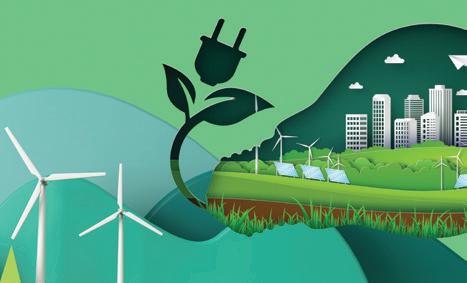



Attention all music and dance lovers! On Friday, September 6, from 7 to 9:30 p.m., Saluda Shoals Park will kick off its live music jazz series with Amos Hoffman, an internationally recognized Israeli jazz guitarist and oud player. Hoffman blends Middle Eastern rhythms and melodic themes with modern jazz. This fun-filled series is for music aficionados of all ages. In addition, beer and wine will be available for purchase for adults. In the event of rain, the event will be held at the cattail shelter.
Cost: $12 advance purchase; $15 at door. Location: Saluda Shoals Park, 5605 Bush River Rd., Columbia. For more information, call 803-772-1228 or visit icrc.net. See ad, page 31.

On Saturday, September 7, from 7 to 11 a.m., the Irmo Chapin Recreation Commission (ICRC) is hosting an indoor garage sale at Seven Oaks Park, located at 200 Leisure Lane, in Columbia. Residents throughout the Midlands are encouraged to clean out the garage, attic, kids’ rooms and closets, and bring those hidden treasures to sell. Make sure to drop by and check out all of the great bargains. Anyone interested in participating as a vendor should call or email for participation details. This event is open to all ages.
Cost: Free to enter. For more information or for vendor details, call 803-772-3336 or email TBennett@icrc.net. Also visit icrc.net/event/seven-oaks-park-indoor-yard-sale.

Attention all pet owners! On Saturday, September 21, from 11 a.m. to 2 p.m., the Irmo Chapin Recreation Commission (ICRC) is hosting its Soggy Doggy Day at Saluda Shoals Park, located at 5605 Bush River, in Columbia. An event for all ages, the fun-filled pet activities will take place at Saluda Shoal’s Splash Pad. As a note, Barking Lot members will receive free admission.
Cost: $6 per dog; $5 parking fee. For more information, call 803-772-3336 or visit icrc.net/ event/soggy-doggy-day.

On Friday, September 27, from 7 to 9 p.m., the Irmo Chapin Recreation Commission is hosting its fun Friday event at Crooked Creek Park, located at 1098 Old Lexington Highway, in Chapin. Catered for kids age 9 to 14, event activities will include basketball, dancing, freeze tag, pizza and more.
Cost: $5 per person; $10 (if food is included). For more information, call 803-345-6181 or visit icrc.net/event/fun-friday-1.

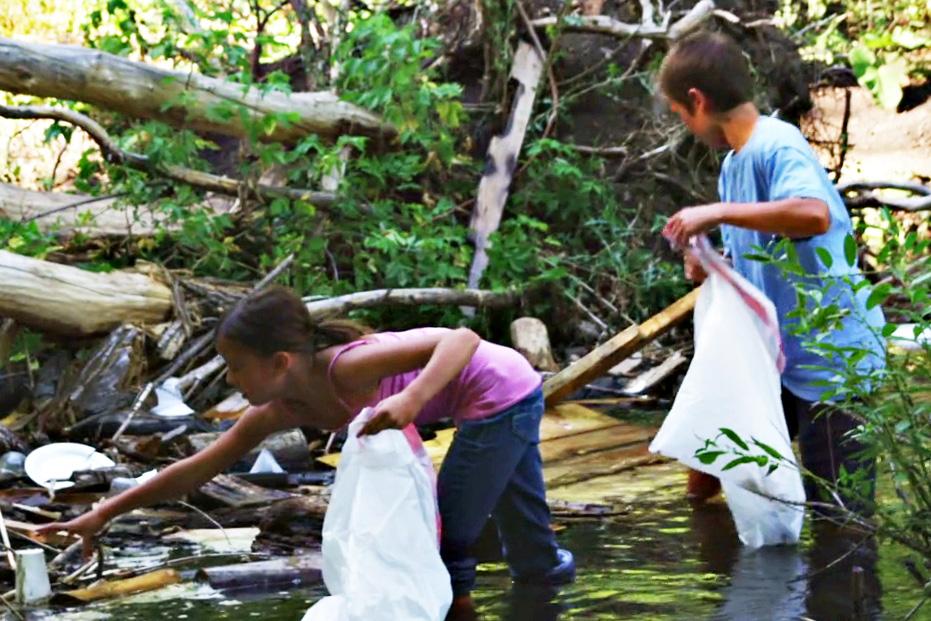
Keep the Midlands Beautiful (KMB) is hosting its Lakeside Litter Sweep event on Saturday, September 14, around areas of Lake Murray. Local Midlands area residents are welcome to join more than 20 event partners and approximately 250 volunteers coming together to clean up Lake Murray’s shorelines, islands and water while having a great time. Volunteers can choose to stay onshore, utilize their own boats, or sign up for a free pontoon boat ride to the islands designated to be cleaned. Preregistration is required.
For more information or to register, call 803-7331139 or visit KeepTheMidlandsBeautiful.org.
Experience elegance for a great cause. Original Origins Health & Wellness is excited to host its inaugural gala on Saturday, October 5, from 6 p.m. to midnight, at Dogwood Pond, located at 3800 Elberta Street, in Columbia. Proceeds from the gala will go toward assisting people that do not have medical insurance to obtain much-needed mental health services. The cost of the event includes complimentary drinks, a meal catered by Chef Xavier Brown, and dessert will be provided by Nothing Bundt Cakes and Dupre Catering. Live entertainment will be provided by Brittany Turnipseed and Rod Foster and Company. Music will be provided by DJ Khaos. Donations are appreciated.
Cost: $95. For more information, contact Tracy Gunter at 833-678-7229. See ad, page 25.
The annual Springdale 5K will be held on Saturday, September 7, at the National Steeplechase Museum, located at 200 Knights Hill Road, in Camden. Kicking off at 8 a.m., the event is organized to support the hunger and homeless programs of the United Way. The U.S. Track and Field-certified course welcomes runners and walkers of all levels with two and four legs. Those that register before September 1 will receive $5 off of registration—use the code EARLY when registering online.

The race proceeds will go to benefit the Mobile Nutrition Center (MNC), a mobile food pantry that delivers healthy foods to sites located in rural Kershaw county. Through community partnerships, MNC delivers farm-fresh, store-bought and rescued food and grocery products, such as vegetables, meats, whole pastas and rice, and baked goods to those in need. Strollers and leashed dogs are welcome. There will be an awards ceremony following the event.
For more information or to register, call 803-432-0951 or visit RunSignUp.com/race/sc/camden/ springdale5k.

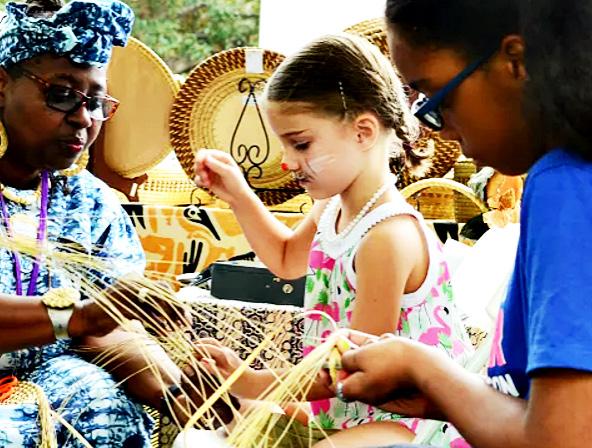
Historic Columbia is hosting its Jubilee: Festival of Black History & Culture from 11 a.m. to 6 p.m. on Saturday, September 21, on the grounds of the Mann-Simons Site, located at 1403 Richland Street, in Columbia. A free event for everyone, the festival will feature various live musicians, artist demonstrations, marketplace vendors, dancers, storytellers and more, all celebrating South Carolina’s Black history and culture. In addition, food from local vendors, nonalcoholic beverages, and beer and wine will be available for purchase.
The list of live entertainers includes Felton Eaddy, the Francis Marion University YGB Gospel Choir, Tiffany J, the Divine Nine Step Team, DJ Kelly Kel and many more. In addition, a kids’ zone will be available with lots of family-friendly activities.
For more information, call 803-252-7742 or email Jubilee@HistoricColumbia.org. Also visit HistoricColumbia.org/events.

On Saturday, September 14, from 9 to 11 a.m., EdVenture Children’s Museum, located at 211 Gervais Street, in Columbia, is hosting its Sensory and Accessibility morning event (Cookie Mouse) for museum guests that are neurodiverse or have other disabilities. A certified American sign language interpreter, sponsored by Colonial Life and provided by the South Carolina School for the Deaf and Blind, will be available throughout the morning for patrons. Sensory-friendly activities will include a sensory-friendly environment, reduced lighting, limited crowd size, sensory-friendly educational programming and resources for parents. Accessibility morning shows are free, but space is limited.
Due to renovation and ongoing road work, guests using the parking deck will not be able to enter the museum using the side atrium entrance. Guests will need to walk around to the front of the building and use the main entrance if they use spaces in the parking deck. Accessible parking is available along the drive-in front of the museum’s main entrance on a first-come, first-served basis.
For guests in need of accessible parking, it is recommended to enter from Huger Street onto Washington Street, and then make a left at the end of Washington Street to access parking spaces located in front of the museum.
Cost: Admission is free with registration. For more information or to register, call 803-779-3100 or visit scMuseum.org/events/accessibility-morning-cookie-mouse.

On Thursday, September 12, from 9 a.m. to 2 p.m., the South Carolina Wildlife Federation (SCWF) is hosting its Spiders of September training workshop at Goodale State Park, located at 650 State Road, in Camden. Participants will learn to distinguish the sexes and specific attributes of spiders and gain a better understanding of the different types of webs spiders spin, including how and why they are spun.
Participants will also learn the basic aspects of a spider’s natural history and better understand the relationship between spiders and their environment. The workshop will be facilitated and led by Austin Jenkins, who teaches and coordinates the popular Midlands Master Naturalist class for SCWF. Jenkins also teaches Natural History of South Carolina at the University of South Carolina–Sumter. Participants are asked to bring a bag lunch and water and be prepared for a day in the field.
Important note: SCWF reserves the right to cancel any event, due to unforeseen circumstances, extreme weather, low registration, or pandemic-related guidance from local/ state officials. Any cancellation by SCWF will result in a full refund for all registrants.
Cost: $75. For more information or to register, call 803-256-0670 or visit scwf.org/ events/2024/spiders-of-september.

Time to put on those running shoes for a great cause! On Friday, September 13, at 7 p.m., the annual Stephen Siller Tunnel to Towers 5K Run & Walk S.C. event will kick off at the Columbia Metropolitan Convention Center (the intersection of Lincoln and Senate streets). The Tunnel to Towers Run & Walk series was created to honor the heroic life and death of Siller, a New York City firefighter who lost his life on September 11, 2001, after strapping on his gear and running through the Brooklyn Battery Tunnel to the Twin Towers. This year marks the 23rd anniversary of September 11. Thousands of people will run or walk to honor first responders and remember all of those lost on that fateful day.
Cost: Varies; see the website for details. To register and for more information, visit RunSignUp.com/race/sc/columbia/ tunneltotowers5krunwalkcolumbiasc.

It’s time for crafts! On Saturday, September 28, from 7:30 a.m. to 2 p.m., the Irmo Chapin Recreation Commission (ICRC) is hosting its fall craft fair at Seven Oaks Park, located at 200 Leisure Lane, in Columbia. Open to all ages, attendees will have the opportunity to shop for unique gifts, charming decorations and one-of-a-kind items, including paintings, handmade jewelry and more. As a note, vendor applications will continue to be accepted until registration is full.
Cost: Free admission. For more information, call 803-772-3336 or visit icrc.net/event/fall-seven-oaks-craft-fair.



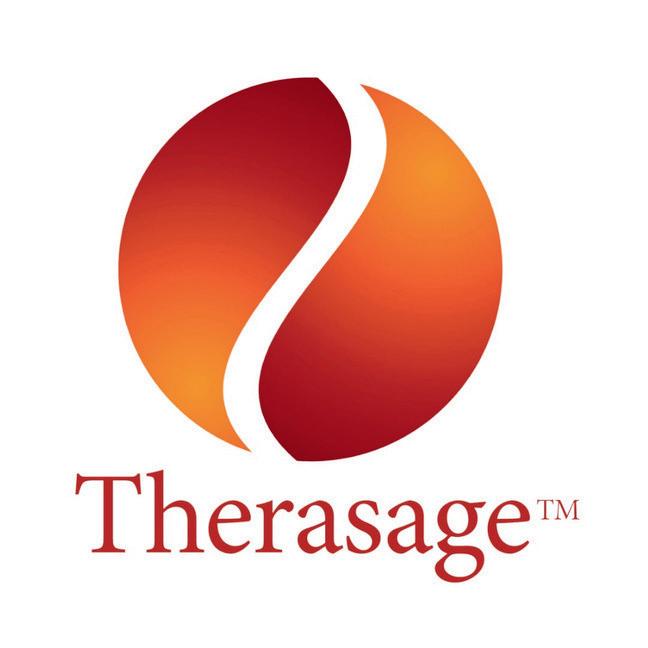
Therasage is the gold standard for energy healing, naturally healing infrared, negative ions and eliminating EMFs.
Therasage.com
Scan to register for educational webcast to learn more.


A NEW fun and interactive series dedicated to the health and well-being of Preschoolers and their families.
WORLD MUSIC, MOVEMENT, MINDFULNESS, CREATIVE PLAY, TIME IN NATURE & POWER OF THE HEART! SUBSCRIBE today!
Scan to learn more and subscribe.


Founded in 1932, Boiron, the world leader in homeopathic medicines, is best known for its popular Arnicare® line of pain relievers and Oscillococcinum® flu reliever.
BoironUSA.com
Save 20% with code NA20



OB/GYN-formulated Rejuvenates vaginal tissue, restores natural moisture, and helps prevent bladder leaks.
DrAnnaCabeca.com/ products/julva







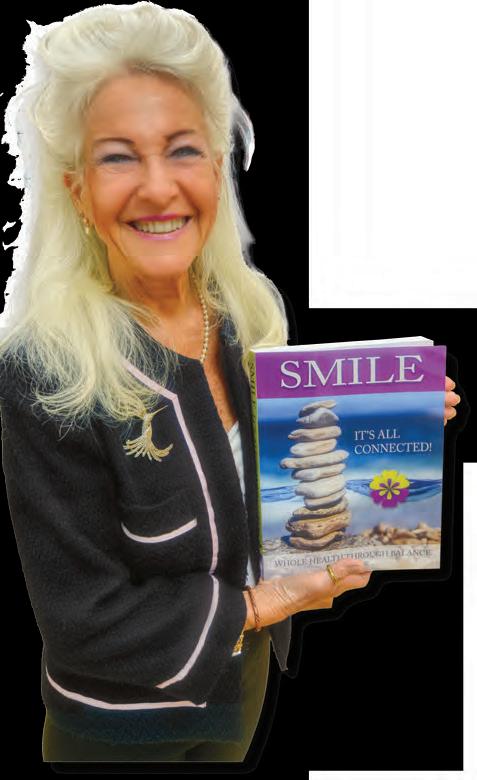




Lupus is an autoimmune disease in which the immune system mistakenly attacks healthy tissue, damaging joints, skin, muscles, connective tissue and major organs such as the kidneys, brain and heart. According to the Lupus Foundation of America, an estimated 1.5 million Americans have lupus, with nine out of 10 being women. Researchers at Northwestern Medicine and Brigham and Women’s Hospital, in Boston, say they have identified the root cause of lupus. In research reported in the journal Nature, the scientists identified a molecular defect that promotes the immune response in lupus, as well as a way to reprogram the lupus-causing cells to correct the imbalance in the immune response. Work continues to find a safe and effective way to deliver these molecules to the body for reprogramming.
While food addiction is not considered an official diagnosis, some people have a hard time controlling the amount of highly processed foods they consume. In research published in the journal Gut, scientists analyzed the microbiome bacteria of mice and humans with food addictions. They found that the bacteria in mice and humans with food addictions were different from their counterparts with a healthy food relationship. The food-addicted groups had lower levels of the beneficial Blautia bacteria and high levels of the detrimental Proteobacteria in their microbiomes. When the researchers increased the Blautia bacteria levels in the mice that had become compulsive eaters, the compulsive behavior stopped. While a correlation between the microbiome makeup and eating patterns has been identified, more research is needed to understand whether that relationship is a cause or a marker for compulsive eating.

Erectile dysfunction (ED) is estimated to affect 18.4 percent, or about 18 million, American men. Acupuncture has long been used as a treatment with fewer potential side effects than pharmaceutical treatments. Unlike conventional medicine, the application of acupuncture and other forms of Traditional Chinese Medicine may vary by practitioner. A research article published in Karger’s Complementary Medicine Research journal sought to reach consensus on the most effective diagnostic and treatment protocols for clinical use and for future research into the effectiveness of acupuncture. Eleven acupuncture experts named 24 acupoints and suggested an optimal dose of between 11 and 15 treatments given once or twice a week.

A group of international scientists have discovered a breeding population of Asian giant softshell turtles on the banks of India’s Chandragiri River. According to an article in the conservation journal Oryx, people from the local community reported sightings and aided in the live release of turtles caught by fisherman.
The softshell turtle has frog-like facial features and is native to the rivers of South and Southeast Asia. They can grow to be more than three feet in length and weigh more than 200 pounds. These turtles are classified as critically endangered on the International Union for Conservation of Nature’s Red List of Threatened Species. The turtle’s population has been in decline due to habitat destruction, over-harvesting for meat and harm from fishing gear. This discovery offers hope for future conservation efforts to help the turtles thrive.


Inside a regular material that conducts electricity, electrons encounter resistance and lose energy in the form of heat. Superconductivity is a state where there is no electrical resistance inside the material. A typical superconducting material achieves zero resistance at extremely low temperatures and, usually, under high pressure. “Unconventional” superconductors are any superconducting materials that work at higher, although still very low, temperatures.
In research published in the journal Communications Materials, scientists have reported the first “unconventional” superconductor found in nature. Miassite, a gray, metallic mineral made of rhodium and sulfur, is usually found embedded in other materials in its natural state and was identified as a regular superconductor in 2010. Special testing was performed on a lab-made piece of miassite to confirm its unconventional status. The only other unconventional superconductors are compounds developed in laboratories.

A 24-hour day seems like a constant, but a day has slowly been getting longer. A day was less than 19 hours long 1.4 billion years ago and was only 23 hours long when dinosaurs roamed the Earth. Natural events such as earthquakes, volcanoes, tides and wind patterns can affect how fast or slow the world turns.
Recently, scientists observed that the dynamics of the Earth’s liquid outer core were causing the planet to speed its rotation, suggesting that we might need to delete a second of time from our clocks for the first time ever. In our highly connected world that relies on precise timekeeping, losing a second could lead to unforeseen complications. However, a new study in the journal Nature concludes that the redistribution of water caused by the melting polar ice caps caused by climate change will delay the need to delete a second from the clock to 2028 or 2029.
As people become increasingly aware of their environmental footprint, planting native trees stands out as an impactful action. In addition to their beauty and shade, indigenous species offer numerous other benefits.
According to the National Wildlife Federation, loss of habitat is the primary threat to wildlife. The U.S. Department of Agriculture (USDA) recommends planting native vegetation to maintain a biodiverse, robust and resilient ecosystem. Because these varietals have evolved over centuries to adapt to the local soil and climate, they are hardy providers of essential shelter and food for an area’s wildlife.
Conservation
The root systems of native trees play a vital role in maintaining soil health, helping to regulate soil temperature, prevent erosion and promote water infiltration. Native trees require less fertilizer and water than non-natives—of particular significance in drought-prone areas.
By sequestering carbon and reducing greenhouse gases, trees contribute to the fight against global warming. They also lower utility bills by shading the house in the summer while allowing the sun to warm it in the winter. Native trees are better equipped to withstand a region’s weather extremes, pests and diseases. The nonprofit American Forests suggests planting species that will be suitable for an area’s expected climate conditions in 30 to 50 years.
Native trees improve air quality by filtering pollutants. They also provide a sense of place and community. A neighborhood with abundant green spaces can enhance mental well-being by offering a natural retreat, especially in urban settings. Integrating native trees into community planning can foster a stronger connection between residents and their local environment, too.
• Select the right tree. Consult the USDA tool (PlantHardiness.ars.usda.gov), which predicts a tree’s resilience in light of current and future climatic variables. To ensure genetic diversity, select plantings that are grown from seed instead of cloned.
• Choose the right spot. Make sure the tree’s mature size will fit the available space.
• Mulch and protect. To support microorganisms, control weeds, hold moisture and help a young tree flourish, spread two to four inches of mulch in a ring extending to the tree’s drip line; avoid piling it against the tree trunk. To enrich the soil, choose organic mulch such as composted leaves or aged hardwood bark.
• Water wisely. Research the water requirements of the species. During the initial establishment period, it is important to provide adequate water without overdoing it.

by Marlaina Donato
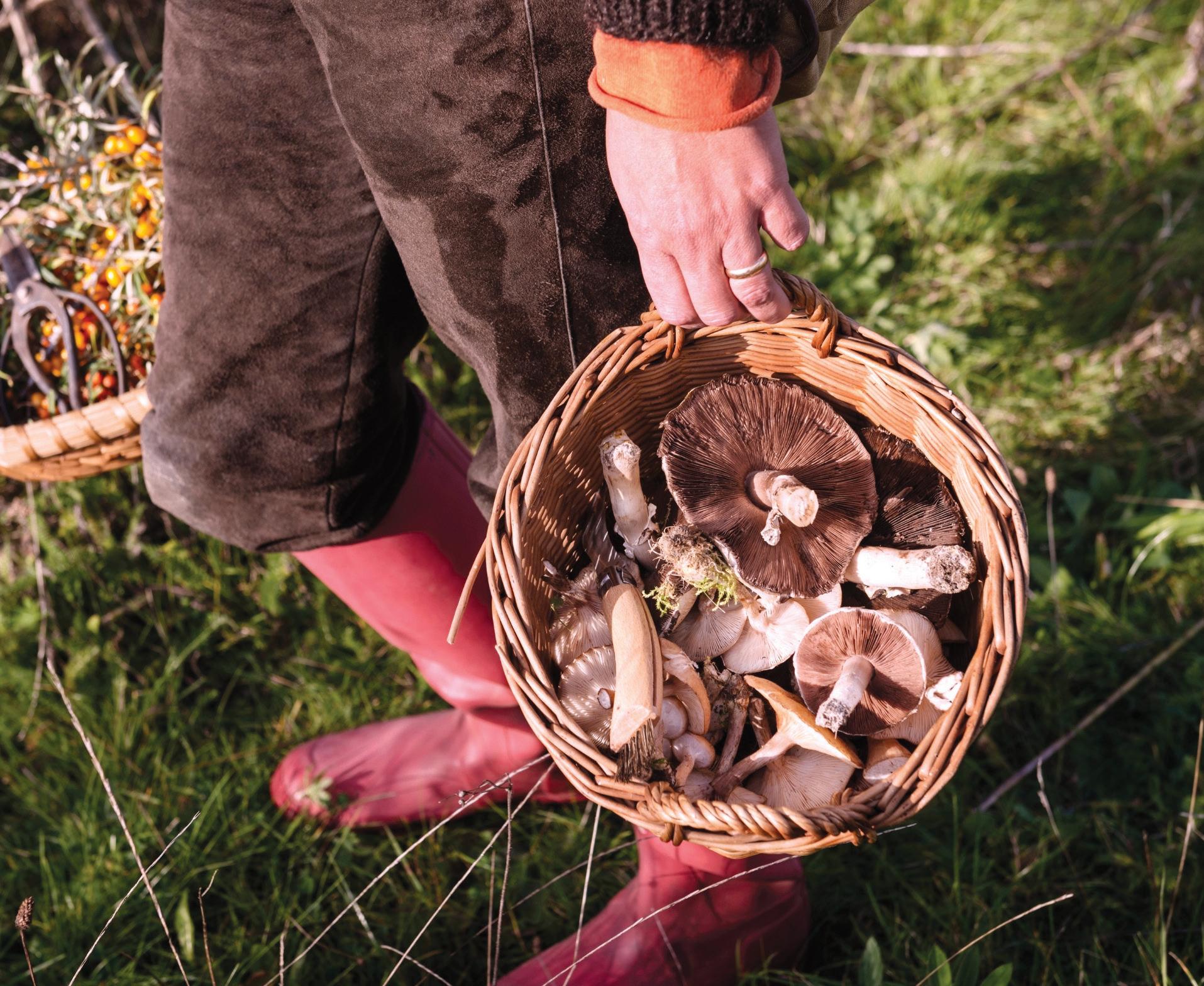
September is National Mushroom Month, and with it comes bountiful inspiration to plate up some earthy goodness. Whether we follow the nearest woodland path to forage or visit the local market to stock up on our favorite fungi, autumn is the perfect time to appreciate the delicious world of edible mushrooms. From creamy vegan risotto to golden soups, or from daring sautés punctuated with chiles to savory broths, consuming more mushrooms benefits our palate and well-being.
The Mayo Clinic reports that mushrooms help curb high blood pressure and protect us from neurodegenerative diseases such as
Alzheimer’s and Parkinson’s. Most mushrooms available at the market are a good source of B vitamins and minerals, especially selenium-rich creminis and vitamin D-rich maitakes.
A 2021 Penn State study published in Advances in Nutrition involving data of more than 19,500 cancer patients over several decades reveals that individuals consuming one-eighth to one-quarter cup of mushrooms daily had a 45 percent lower risk of total cancer compared to those that did not. It is believed that the antioxidants ergothioneine and glutathione—present in all mushrooms—contribute to beneficial metabolic processes in the body. Other research is focused on a correlation between white
button mushroom consumption and a lower risk of prostate and breast cancer.
Mushrooms have been used as both nourishment and medicine for ages, but their versatility in the kitchen is what delights Sharon Palmer, a plant-based dietician and author of California Vegan and The Plant-Powered Diet. “You can sauté or grill them as a side dish, stir them into soups and stews, add them to grain and pasta dishes, chop them into salads or bowls and include them in casseroles,” she advises. “Use finely chopped mushrooms in lentil patties, veggie burgers, veggie ‘meat’ balls and veggie loaves. You really can’t detect their texture, but you get that rich, savory flavor in the recipe.”
Palmer favors certain commonly available varieties: shiitake and trumpet mushrooms for their reliable, firm texture; oyster mushrooms for their delicate softness suited for stir fries; and petite enoki mushrooms for a crisp addition to salads. To obtain memorable flavor, gourmet varieties such as porcinis can be purchased dried and easily rehydrated for soups and sauces.
On the wilder side, foraged mushrooms such as golden chanterelles are an annual favorite among connoisseurs. “The mossy, old-growth forests of the Pacific Northwest are some of my favorite fall destinations,” says Langdon Cook, a Seattle-based forager and author of The Mushroom Hunters, who recommends taking a foraging class or joining a mycological society for hands-on safety tips and in-the-field learning.
Cook notes that mushrooms are ideal for vegetarians and vegans because many varieties are firm in texture and pair well with vegetables. “Black trumpet or yellowfoot mushrooms take a basic dish of creamy polenta to the next level, and most grains and pastas will benefit from the addition of fungi,” he asserts. “Try a dry sauté method: heating the mushrooms in a bare pan until they release their water, cooking off that liquid and then adding butter or oil near the end of the cooking process to brown them.”
While mushrooms can dress up gourmet dishes, they are surprisingly quick and easy for everyday eating, too. “You don’t need to fuss over mushrooms too much,” Palmer points out. “Just rinse in water and pat dry; then you’re ready to cook with them. My favorite way to cook mushrooms is to slice and sauté them in a small amount of olive oil with garlic and lemon as a side dish.”
Cook advises, “Don’t try to cook mushrooms too fast or over high heat. Medium heat is fine. Take your time. Mushrooms are mostly water, and you need to cook off that liquid content to give them a nice sear.” He underscores the importance of cooking wild mushrooms fully to prevent digestive upset, especially morels, which “absolutely cannot be served raw or undercooked.”
Palmer concurs, saying, “Eating raw mushrooms may cause mild GI [gastrointestinal] issues in some people; cooking the mushrooms typically eliminates this issue.” She also suggests covering the pot or pan when cooking them in soups or stews to lock in flavor and nutrition.
For Cook, the magical lure of mushrooms goes beyond the tastebuds. “To me, morels mean springtime trips to woodlands reawakening from winter slumbers with birdsong and snowmelt, and porcinis mean long summer hikes to subalpine meadows in the Rockies and North Cascades,” he says.
Marlaina Donato is an author, painter and recording artist. Connect at BluefireStudio.art.

FOR POLENTA:
1 cup water, plus more as it cooks
½ cup milk
½ cup polenta
½ tsp salt
1 Tbsp butter
Parmesan cheese, grated, to taste
FOR MUSHROOMS:
¼ lb (or more) wild mushrooms, roughly cut into pieces
2 Tbsp butter, divided
2 cloves garlic, minced
2 Tbsp porcini powder*, rehydrated with ½ cup warm water
1 Tbsp soy sauce
1 Tbsp heavy cream
1 tsp olive oil
Salt and pepper
* To make porcini powder, pulverize a storebought package of dried porcini into powder with a spice grinder. Chicken or vegetable stock may be substituted for porcini powder.
Over medium-high heat, bring water and milk to simmer in a medium-sized sauce
pan or pot. Slowly add polenta while whisking to prevent clumping. Season
with salt and continue to whisk for a minute or two. Turn heat to low and cook for about 45 minutes, stirring occasionally. Add more water as necessary to maintain creaminess.
While the polenta cooks, in a small pan sauté garlic and mushrooms in a tablespoon of butter over medium heat, stirring occasionally. Cook mushrooms until they release their water and then cook off liquid, allowing mushrooms to brown slightly; this might take several minutes. Season with salt and pepper.
Add ½ cup rehydrated porcini stock (or chicken or vegetable stock) to mushrooms. Continue to cook on medium heat until the liquid is reduced by half and then turn heat to low. Add soy sauce, cream and a drizzle of olive oil. Stir together and allow to thicken. Keep warm in pan over low heat while waiting for polenta to cook. If sauce becomes too thick, add another splash of water, cream or stock. Just before plating, melt one more tablespoon of butter into mushroom sauce and stir.
When polenta is thoroughly cooked and creamy, add butter and cheese (and more liquid if necessary). Adjust seasoning. Serve in a bowl and spoon mushrooms and sauce on top.
Recipe and photo courtesy of Langdon Cook.
1 Tbsp extra-virgin olive oil
1 medium red onion, diced
2 garlic cloves, minced
1 8-oz sweet potato, peeled, cubed
4 oz fresh green beans, chopped
8 oz mushrooms, sliced
1 cup brown or green lentils, dried
2 Tbsp fresh sage (or 1 Tbsp dried)
2 tsp thyme
1 Tbsp whole-grain prepared mustard
½ tsp black pepper
2 cups vegetable broth
½ cup water
2 Tbsp gluten-free soy sauce
¼ cup plain, unsweetened, plant-based milk
2 Tbsp flour
Salt, to taste
1 cup all-purpose flour
½ cup whole wheat flour
¼ tsp salt (optional)
2 Tbsp fresh sage, chopped (or 1 Tbsp dried)
⅓ cup vegan butter
4-5 Tbsp ice-water
Heat olive oil in a heavy pot or saucepan over medium heat. Add onion and garlic and sauté for 5 minutes. Add sweet potato and green beans and sauté for 3 minutes. Add mushrooms and sauté for 2 minutes. Add lentils, sage, thyme, mustard and black pepper and sauté for 1 minute. Add vegetable broth, water and soy sauce and cook for 15 minutes.
Mix plant-based milk with flour until smooth. Stir into vegetable mixture and cook until thickened and bubbling, about 5 minutes. Season with salt, as desired. Transfer filling into a deep pie dish or round casserole that fits 1½ quarts.
While filling is cooking, make the sage pastry crust. Preheat oven to 425°F. In a medium bowl, mix all-purpose and whole-wheat flours and salt. Mix in sage. Cut in vegan butter with a fork until it makes

a crumbly texture. Add cold water, 1 tablespoon at a time, and mix using clean hands until it creates a firm dough that holds together but is not sticky. Do not overwork dough, as it will get tough.
Turn out pastry dough on a floured surface and roll out with a pastry roller to create a circle about 11 inches in diameter. Place the pastry over the top of the savory pie and crimp the edges with your fingers to secure the pastry dough to the top of the dish. Cut several vents with a knife along the pie.
Place the savory pie on a baking sheet (in case it boils over) and place in the oven. Bake for about 20 to 22 minutes until golden brown. Remove and serve.
To make this recipe gluten-free, use corn starch instead of flour and gluten-free flour blend instead of all purpose and whole wheat flour.
Recipe and photo courtesy of Sharon Palmer.

Mushroom Bomb Lentil Pasta
YIELD: 6 SERVINGS
1 8-oz package lentil pasta
3 Tbsp truffle oil or extra-virgin olive oil
1 lb mixed mushrooms (enoki, shiitake, cremini, hen of the woods, maitake, oyster), coarsely sliced
2 cloves garlic, minced
1 tsp chopped fresh or dried thyme
1 cup dry white wine
Sea salt, to taste
Freshly ground black pepper, to taste
Cook lentil pasta in boiling water according to package directions. Rinse and drain.
While pasta is cooking, heat truffle oil in a large sauté pan and add mushrooms, garlic and thyme. Sauté for 3 minutes. Add white wine and continue sautéing for an additional 5 minutes to reduce liquid and make a more concentrated sauce. Add cooked pasta to mushroom mixture and toss together. Season as desired with salt and black pepper. Serve immediately.
Recipe and photo courtesy of Sharon Palmer.

YIELD: 2 SERVINGS
3 Tbsp peanut oil
¾ lb oyster mushrooms, cut into half-dollar pieces
¾ lb chicken breast, thinly sliced into a similar size as mushrooms
4 green onions, cut into 2-inch pieces
3 large cloves garlic, thinly sliced
1 large thumb-sized piece of ginger, thinly sliced
Salt and white pepper, to taste
FOR MARINADE:
½ tsp salt
1 tsp Chinese cooking wine (Shaoxing)
1 tsp potato starch
FOR SAUCE:
3 Tbsp chicken stock
1 Tbsp oyster sauce
½ tsp potato starch
Combine sliced chicken in a bowl with marinade ingredients, stir and set aside. Whisk together sauce ingredients in a small bowl and set aside.
In a wok over medium heat, sauté oyster mushrooms in 1 tablespoon oil, stirring occasionally. Remove to a bowl when slightly browned.
Heat 2 tablespoons of oil in wok over high heat and add marinated chicken. When the chicken is partly cooked but still pinkish, add garlic, ginger and green onion. Cook together, stirring, for 30 seconds until aromatic before returning oyster mushrooms to wok. Continue to cook together another minute or so until chicken is barely cooked through.
Pour in sauce, stir to coat and reduce heat. Season to taste and serve immediately with rice.
Recipe and photo courtesy of Langdon Cook.
by Carrie Gauthier
Trauma can strike anyone at any time. Loss, heartbreak, abuse, violence, displacement, accidents, disasters, health problems—the list of possible traumas is endless. According to the National Council for Behavioral Health, 70 percent of adults have experienced at least one traumatic event in their lives, and more than a third of youth exposed to community violence experience post-traumatic stress disorder (PTSD). Trauma is a factor in most behavioral health and substance-use disorders. While trauma may be part of our lives,
it does not need to define who we are or how we enjoy our lives. Healing from trauma can take time, but it is within reach.
Left untreated, trauma or repeated trauma has a wide range of short- and long-term effects on physical and mental health. Trauma increases stress and keeps the fight-or-flight response on elevated alert, resulting in the release of chronically high amounts of cortisol into the body. Initial reactions may include exhaustion, numbness, sadness,
anxiety and dissociation. Excessive cortisol increases the risk of serious health conditions such as heart disease, digestive problems, muscle tension, headaches, sleep issues, weight gain, irregular periods, anxiety, depression and cognitive challenges.
Trauma is a common precursor to addiction, because individuals often turn to substances as a coping mechanism for their emotional pain. The use of drugs or alcohol gives trauma sufferers a reprieve from their chronic stress by producing pleasure and reducing negative feelings, and may even slow their central nervous system. Untreated, trauma can lead to a vicious cycle where one condition feeds the other.
While medications such as antidepressants and antipsychotics can be effective in treating trauma symptoms, they may fall short in addressing the root cause. An integrative approach to trauma healing adds evidence-based therapies to tackle the underlying causes and promote long-term recovery.

James Greenblatt, a board-certified functional and integrative psychiatrist and founder of Psychiatry Redefined, believes in a broader view of psychiatric care. “For example, if our patient is suffering from depression and we were to tell them they should exercise because it’s the best antidepressant we have, that could come off as incredibly insensitive, ruin our chances of gaining their trust and add to their feelings of helplessness and isolation. Alternatively, if we show them how to recover their motivation and energy, that is the way to begin the relationship.”
“Our bodies are different, and our genetics are different. How we react to stress and trauma are different too. I start with lab and genetic tests to see if there’s something I can optimize biologically. Then we supplement any nutritional deficiencies to restore their functionality and increase their energy. These tests also partially help inform the way we design the complementary healing modality plan. This is the piece that gets missed a lot,” says Greenblatt, adding that he tests depressed patients for a vitamin B12 deficiency, which may contribute to depression, anxiety and even psychosis.
Children are particularly susceptible to trauma, and an adverse childhood experience (ACE) can pose lifelong impacts. According to the U.S. Centers for Disease Control and Prevention, 64 percent of adults say they have had at least one ACE, and 17 percent say they had four or more by age 18. ACEs can rob kids of the magic of childhood, disrupt their development and lead to maladaptive behaviors in adulthood.
Aimie Apigian, a double board-certified physician in preventative and addiction medicine and founder of Trauma Healing Accelerated, started her work with attachment and trauma by working with adoptive families to help their children with
attachment insecurity. She explains that childhood traumatic experiences can result in “underlying mistrust—literally wiring a child’s nervous system, brain and body for survival—and overwhelm connection, security and safety.”
Somatic therapy is one modality that Apigian integrates to assist individuals on their trauma-healing journey, helping them connect with their bodies, learn to understand its messages and resolve stored trauma. Apigian explains that just 10 minutes of sequential somatic exercises over 21 days can restore a sense of safety. “For each person, the specific improvement or the degree of improvement will be different, but there will be an improvement as soon as we shift our biology into one of safety rather than of danger.”
By following an essential sequence to safely address stored trauma through somatic exercises, Apigian says people “experience 30 percent less depression, 30 percent less anxiety, 30 percent fewer digestive issues, 30 percent improvement in energy and a 60 percent increase in their feelings of safety. The essential sequence has to start with creating a felt sense of safety, then a sense of support and then opening up while pacing our process. It is such a powerful way to empower them for their lifetime.”
Inner-child work can help develop a dialogue to reach the place where we hold past emotions, memories, beliefs, hopes and dreams. “I tell people when they’re starting this journey, if they put their hands on their belly above and below their bellybutton and just let the hands be there, that will calm down an aspect of us so that it begins to feel safe. It’s called the basic self,” says Dr. Lin Morel, a trauma management specialist and founder of Beyond Words Group. “It’s an aspect of our consciousness that is roughly 5 years old, if you were to give it an age. So it gets very fearful, and if it’s not loved, it will act out.”

According to Morel, embracing the basic self can help people out of some of the darkest corners of trauma. No stranger to childhood and adult trauma herself, she empowers her patients with the W.I.N. protocol (willingness, intention, neutrality), which offers them a fresh approach to handling challenges while developing their intuition and regulating emotions as a neutral observer.
There is growing evidence that mindfulnessbased practices such as meditation and yoga aid in shifting focus from the negative to the positive aspects of experiences. These techniques calm the nervous system and empower individuals to take control of their narratives and become more resilient.
A 2017 review of trials involving 650 trauma sufferers that underwent mindfulnessbased stress reduction, yoga and mantra repetition was published in Psychological Trauma: Theory, Research, Practice, and Policy. The researchers concluded that meditation was an effective treatment for PTSD and depression symptoms as compared to the control groups.
A 2022 systematic review of 149 records and 11 peer-reviewed articles published in the International Journal of Environmental

Research and Public Health found that those that practiced yoga had an increased sense of self-compassion, felt more centered, developed coping skills, had a better mind-body relationship and improved their relationships with others. Participants also experienced a feeling of safety in yoga classes that included others recovering from trauma.
Hypnotherapy is a mind-body practice that uses a trance-like state of deep relaxation

to treat psychological and emotional disorders. Guided imagery, progressive relaxation and suggestion therapy are used to explore thoughts, feelings and memories that may be hidden from the conscious mind. Self-hypnosis techniques are also taught for ongoing support, empowering individuals to continue their healing outside of therapy sessions. A 2016 meta-analysis published in the International Journal of Clinical and Experimental Hypnosis concluded that hypnosis is effective in alleviating PTSD symptoms.
“A miracle, simply, is a shift in the mind. Once you find the root cause of the problem in the mind and bring that to consciousness, we’re shifting from ego to true self, from fear to love, from illusion to truth,” says Matthew Brownstein, executive director of the Institute of Interpersonal Hypnotherapy. “Through hypnotherapy, that shift is actually remarkably easy. You can shift as quickly as I can snap my fingers. So, basically, when you change your mind, everything changes. When a decision is made, it stays in place until you choose again.”
Carrie Gauthier is a writer in the healing arts with interests in clinical and transpersonal hypnotherapy.
by Christina Connors
The mental health of our children is in crisis. According to the U.S. Surgeon General’s 2021 advisory on the youth mental health crisis, one in five children aged 3 to 17 has a mental, emotional, behavioral or developmental disorder.
To turn the tide on mental health, kids need emotional regulation skills, including the ability to identify emotions, self-soothe, obtain perspective, walk in another’s shoes, think flexibly and solve problems. By developing these emotive sensitivities, children can then improve their self-confidence, sense of self-worth and empathy, as well as begin to develop lasting and meaningful relationships.
“Kids will learn to regulate in the face of challenge. The only question is whether they learn healthy or unhealthy ways to do it,” says Brad Chapin, a licensed clinical psychologist in Topeka, Kansas, and author of self-regulation resources for children. “Removing challenges from children isn’t the answer. The focus should be on building self-regulation skills, and then those challenges become opportunities for strengthening those skills.”
In the words of lyricist Stephen Sondheim, “Careful the things you say / Children will listen.” Janet Philbin, LDSW, a certified, conscious-parenting coach and author, says, “When people become parents, they will tell

you they want to parent differently than how they were parented because of the emotional childhood pain they endured. However, generational patterns will more than likely repeat unless the parent has done the emotional work to deconstruct their own childhood pain through coaching or counseling. As a result of doing the necessary inner work, a parent’s ability to connect with their children will improve because they are able to be more connected with themselves.”
“When we choose to look at behavior issues as a lack of skill-development, it changes the story from one of shame and negativity to one of hope,” says Chapin, whose recent book Self-Regulation Skill Set supports adults in their journey to self-regulation.
As with learning any new skill, practice is key. Here are a few fun activities for parents and children to do together to strengthen connections and build emotional regulation skills. Teaching kids when they are young is ideal, but it is never too late to start.
I Spy: While in a store, on a walk or at a park, challenge each other to notice the body language and facial expressions of people (or themselves) and identify the emotion they might be feeling. This game is a way to practice the skill set of recognizing warning signs when we start to feel upset. Parents should encourage their kids
to take notice of the different expressions their peers make while at school to develop empathy and compassion.
The Paws (Pause) Game: To play, the first person who sees a dog says, “paws”, takes a calming breath and puts their hands out like paws. The person with the most points at the end of the excursion wins. This game develops the skill of slowing down the alarm system within our bodies. Parents and caregivers can remind kids that throughout the day when they start to feel their own warning signs of anger or frustration, they can take a breath and “paws” to help prevent acting in a destructive way.
Balloon Party: In this game, parents invite their kids to sit comfortably with them and imagine that they are all preparing for a big party and need to blow up lots of balloons. While blowing up pretend balloons, remind each child to blow them up slowly so they don’t pop. After blowing up several balloons, enjoy a pretend party. This is a fun way to connect with children through imaginative play while practicing peaceful breathing, which helps calm the nervous system.
Christina Connors is a writer, singer and creator of Christina’s Cottage, a YouTube series to strengthen kids’ resilience, connection and joy through music, mindful play and the power of the heart. Learn more at ChristinasCottage444.com.
by Zak Logan
For many of us, our hair can feel like an outward expression of our identity, and we may struggle emotionally and socially when it is compromised. According to the National Alopecia Areata Foundation, an estimated 6.7 million Americans suffer or have suffered from alopecia areata (AA), an autoimmune disease resulting in hair loss on the scalp, face and other parts of the body. Whether AA manifests as bald patches or complete hair loss, the conventional courses of action may involve oral prescription medication, over-the-counter topical products and oral or injected steroids that are often unsuccessful and may come with side effects.
There is evidence that stress and anxiety can play a role in AA, as can certain underlying health conditions such as thyroid disease, celiac disease and lupus. Hormonal
imbalances and vitamin and mineral deficiencies can also be key factors. Although AA can be a stubborn condition, alternative approaches such as centuries-old Ayurveda and Traditional Chinese Medicine (TCM), including acupuncture, can offer hope.
According to allopathic medicine, AA may be caused by hormonal imbalances or an excessive immune response that attacks the hair follicles, but from the perspective of Eastern medicine, the issue is more complex. Ayurveda, India’s 5,000-year-old holistic-health system, approaches AA and other health conditions from the concept of individual constitution. Energetic forces called doshas are believed to be inherent in all cells and organ systems and embody five natural elements: earth, air, fire, water and ether.
“Our doshic makeup is very unique, with the ratios between the three doshas (vata, pitta and kapha) being different for each one of us. In alopecia, it is most commonly seen as a pitta condition when the metabolic fires within us are excessive and too hot, causing inflammation,” says Virender Sodhi, an Ayurvedic and naturopathic physician, in Redmond, Washington. He adds that for alopecia cases caused by thyroid disorders, in which the hair becomes dry and brittle before falling out, he would look into the health of a person’s vata, the dosha that corresponds to the element of air.
A 2022 case study of an individual AA patient published in Journal of Ayurveda and Integrative Medicine reported that the patient saw improvement within 15 days of an Ayurvedic treatment plan that included a combination of cleansing, detoxification,


blood purification and naturally derived medications. The researchers recommended further study of these techniques. Another study published in the same journal a year later noted the effectiveness of certain Ayurvedic medicines comprised of natural elements, combined with cupping, in which heated cups are placed on the back, stomach, arms, legs or other parts of the body, forming a vacuum or suction force.
From the approach of 3,000-year-old TCM, imbalances and illnesses are attributed to obstructions within the body’s subtle energetic system. “This is the concept of the life force, or the energy of our body as it takes care of itself,” explains Brian Keenan, a naturopathic doctor and licensed acupuncturist at Sagelight Integrative Wellness Center, in Columbia, Maryland. “In Chinese medicine, qi is the energy of the body, and it flows along a set pattern similar to a well-connected network of roads and highways. Meridians are the names of the major highways an acupuncturist will use to influence the qi flowing through them.”
In cases of alopecia, Keenan would dive deeply to find the origin of the pathology. “The specifics of your symptoms will help an acupuncturist figure out where exactly the problem is coming from, since there can
be several issues at once,” he explains. “This is why your acupuncturist may spend a great deal of time asking you detailed questions about every nuance of not just your symptoms but also your whole body’s health.”
A 2022 review of eight studies published in Frontiers of Medicine found that acupuncture or moxibustion (the burning of dried mugwort on or near the body during acupuncture), used by themselves or in combination with other treatment modalities, may be effective in treating hair loss.
Clinical findings published in the Indian Journal of Dermatology in 2017 report that systemic vitamin D levels are lower in people with AA, and improvement might result from supplementation. Recent research also shows that zinc deficiency was noted in sufferers and adding the mineral to the diet might be helpful. Mount Sinai Health System, in New York City, suggests that biotin

and trace minerals might foster hair growth and recommends including beneficial foods such as carrots, tomatoes, chard and romaine lettuce.
Practitioners of both Ayurveda and TCM attest to the value of eliminating processed foods as a way to support the liver in its role of minimizing systemic inflammation. They also recommended streamlining busy schedules and employing meditative practices to reduce stressors.
For best results, commitment is key. Regarding TCM, Keenan suggests an eight-week treatment plan of herbs and acupuncture. “Is it possible to see results sooner? Absolutely. But from my experience as a practitioner, it’s better to set realistic expectations, and if we get there sooner, then that’s all the better.”
Zak Logan is a freelance health writer dedicated to holistic living.


by Carrie Gauthier
The first known reference to yoga is in the Upanishads Sanskrit texts, written 2,500 years ago. The practice originally comprised breath work, and the physical postures developed over time. According to the global data platform Statista, nearly 34 million Americans practice numerous types of yoga, while science continues to provide evidence of its healing potential.
With the frenetic pace of life today, many people live in a permanent state of anxiety. Yoga can ease the panic and malaise by activating the parasympathetic nervous system to decrease stress hormones, blood pressure and heart rate.
“Yoga therapy differs from traditional psychotherapy in scope and aim. Rather than delving into traumas, yoga empowers individuals to be present, moving away from personal narratives,” says Adam Flores, a certified yoga therapist from Port St. Lucie, Florida, specializing in addiction and mental health. “Trained yoga therapists offer grounding techniques and skillful checkins, especially for trauma cases, improving heart rate variability, vagal tone and overall nervous system health.”
A 2011 meta-analysis study published in Primary Care Companion for CNS Disorders indicates that yoga may be an effective
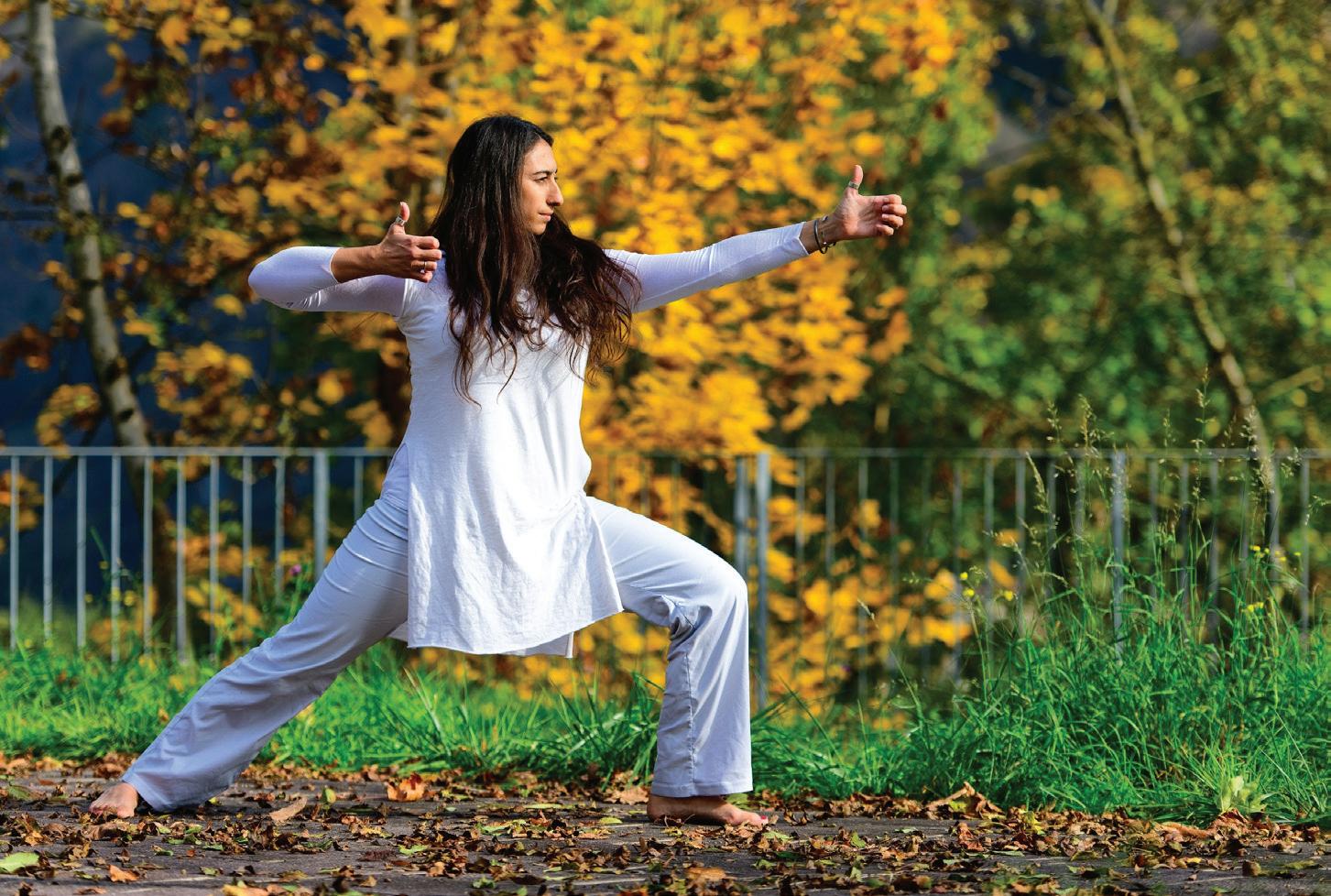
treatment option for severe mental illness, with the added advantage of being less toxic than pharmaceutical treatments.
Post-traumatic stress disorder (PTSD) is a significant issue facing the U.S. military and a growing problem for teens that have experienced violent or traumatizing events. Conventional treatments such as cognitive behavioral therapy and eye movement desensitization and reprocessing have shown limited effectiveness due to high dropout and nonresponse rates. On the other hand, studies have found that engaging in yoga and other mind-body practices can reduce intrusive memories, avoidance and emotional arousal symptoms, as well as anxiety, depression and anger associated with PTSD.
Yoga therapy improves critical factors in addiction recovery, including emotional balance, mental clarity and stress reduction. In a 2021 study published in the Journal of the American Board of Family Medicine, yoga for the treatment of substance abuse disorder was determined to be an effective option.
Yoga has developed into a variety of styles that can meet the goals and objectives of their practitioners. Some of the more popular formats include:
• Vinyasa: An up-tempo class of postures or poses (asanas), often accompanied by high-energy music that typically results in a consistently elevated heart rate. A 2017 study published in The FASEB Journal found that eight weeks of vinyasa yoga improved physical fitness, relieved stress and improved mental well-being.
• Yin: This form of yoga focuses on gentle, passive stretches held for one to three minutes, offering ample opportunity to release stress and tension. Poses are often supported by props such as bolsters, straps, blocks, pillows and blankets. Long, slow, deep breathing promotes relaxation to help the practitioner hold each pose for extended periods of time. Yin yoga
stimulates and stretches fascia, the thin connective tissue throughout the body, as well as ligaments and joints, resulting in increased flexibility.
• Hatha: This is a classic yoga style involving breathing exercises and poses that are held for longer periods of time than other formats. Although the slower, more meditative pace may seem easier, holding a proper pose for extended periods of time can be challenging for the body and mind. According to a 2018 study in the International Journal of Preventive Medicine, 12 sessions of hatha yoga significantly reduced stress, anxiety and depression in women.
• Kundalini: This yoga style prioritizes spiritual growth and awareness, with a focus on energy and chakras. Kundalini awakenings are common via movement sequences, breath work, mantras and chanting. Different studies in 2021 found that kundalini yoga is an effective shortterm therapy for generalized anxiety disorder and can be helpful in reducing the severity of insomnia.
One of the core tenets of a yogic practice is self-compassion, and it is important to resist the inclination for negative self-talk. To adopt the yogic way is to choose happiness over suffering.
“In my experience, the best healing experiences happened by tapping into the body and unlocking the energies we hold onto,” says Paty Renda, a certified Ananda hatha yoga instructor and co-owner of Premah Wellness, in Fort Lauderdale, Florida. “I believe in serious work done through fun exercises such as breath, dance, laughter and movement. A simple, slow and deep hatha yoga practice can create profound changes. Gratitude is another very easy, and yet immensely powerful, practice I infuse into everything I do.”
Carrie Gauthier is a writer in the healing arts with interests in clinical and transpersonal hypnotherapy.


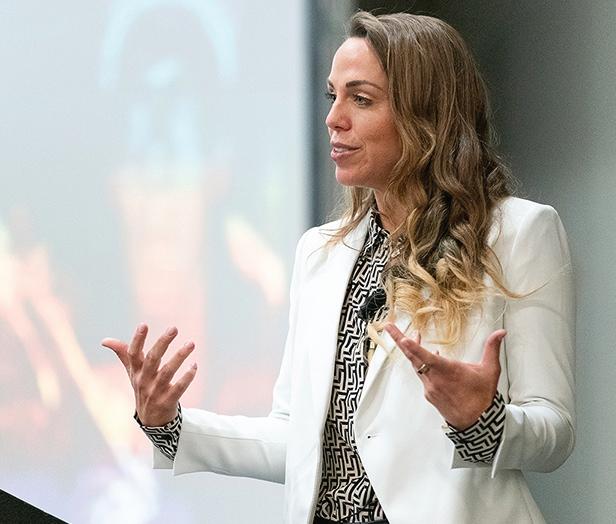

by Kelcie Ottoes
Emerging sustainability initiatives such as renewable energy, greenwashing regulation, artificial intelligence (AI) applications and biodiversity programs are all being championed by stakeholders for the greater good of our planet.
Renewable energy is derived from natural sources, such as the sun and wind, that are replenished at a higher rate than they are consumed. In 2023, the U.S. Energy Information Administration reported that renewable energy made up 9 percent of total energy consumption from these sources: biomass waste, biofuels and wood (60 percent); wind (18 percent); solar (11 percent); hydroelectric (10 percent); and geothermal (1 percent).
The International Energy Agency predicts that renewables will provide more than a third of global electricity generation by early 2025—surpassing coal—due in large part to increasingly cheaper photovoltaic technology. The quest continues to improve the efficiency, cost effectiveness, adaptability and environmental footprint of existing solar panels. Advanced photovoltaics use innovative materials such as perovskites, organic and tandem solar cells, which may surpass the efficiency of traditional silicon-based
solar cells. The use of floating solar panels and panels above or adjacent to agricultural production serves to minimize land use and increase opportunities for energy production. Flexible, transparent solar cells also allow for their integration into a wider range of applications.
These advancements are also aided by improvements in energy storage. Lithiumglass batteries and redux flow batteries
manage the intermittency of renewable energies like wind and solar better and have a lower environmental impact than other batteries. Flow batteries, in particular, show potential as a cost-effective, longterm storage solution.
Greenwashing is the practice of making a product appear to be more environmentally friendly or less environmentally damaging than it really is, and new antigreenwashing laws are being promoted to help consumers make better choices. The European Union has banned environmental claims that are not supported by transparent, verifiable data. It also imposes strict regulations on potentially misleading terms such as “environmentally friendly”, “eco-friendly”, “green”, “biodegradable” and “carbon neutral”.
In a similar move intended to provide environmental transparency and oversight, the California Climate Corporate Data Accountability Act will require companies with more than $1 billion in revenues to report their direct and indirect emissions from

energy consumption with third-party certification beginning in 2026. This information will be made public online.
AI is expected to play a larger role in fighting climate change. Some applications include:
• Identifying carbon inefficiencies within a supply chain to influence reduction strategies
• Improving the efficiency and maintenance of renewable energy infrastructure, optimizing the management of the power grid, forecasting power consumption and managing energy distribution
• Supporting the agriculture industry by analyzing soil data, plant health and weather forecasting
• Boosting recycling rates by using AIpowered machines to sort materials to be recovered
These advancements in AI are not without cost. According to Nathan Childress, Ph.D, a nuclear engineer and CEO of Macorva, “AI’s voracious appetite for energy is straining power grids and causing some tech giants to miss their carbon reduction targets. This highlights a critical need for immediate action in expanding clean energy infrastructure to support AI’s growth.”
According to the Kunming-Montreal Global Biodiversity Framework, a United Nations-led initiative, more than half the world’s population—4.3 billion people— depend on biodiversity and nature for their livelihood, with 70 percent of the world’s poorest and most vulnerable relying directly on nature for their everyday needs. And yet, biodiversity is dwindling at an alarming rate.
“Urbanization and deforestation lead to habitat fragmentation, while pollution—particularly plastic and chemical waste—degrades ecosystems,” says Abdullah Choudhry, chief
impact officer at Arbor, a carbon assessment company. “According to the World Wildlife Fund, wildlife populations have declined nearly 70 percent since 1970, highlighting the urgent need for comprehensive conservation efforts.”
To protect biodiversity, volunteers are teaming up with researchers on long-term ecological projects. The nonprofit Biodiversity & Development Institute, for example, enlists citizen scientists with smartphones to identify African mammal, aquatic, insect and plant species for their Virtual Museum project. In Japan, the mobile application Biome was able to collect more than 6 million species observations with the help of the public. In a study published in eLife, scientists combined these citizen sightings with traditional data to improve ecosystem assessments and protected-area designations.
In a journal article published in BioScience, experts report a growing opportunity for citizen-led research in biodiversity, noting that people onsite are able to identify under-sampled species and help scientists gain a deeper understanding of ecological interactions among species or habitats. Offering hope for future generations, kids are also getting involved. The Biodiversity Group, in Arizona, offers a K-12 curriculum that encourages biodiversity stewardship at a young age.
Kelcie Ottoes is a copywriter and content creator specializing in sustainability and environmental topics.

Live as if you were to die tomorrow. Learn as if you were to live forever.
—Mahatma Gandhi






by Ruth Roberts, DVM, CVA, CVH, CVFT, NAN
Pet therapy, also known as animalassisted therapy (AAT), has long been recognized for its therapeutic benefits across a range of mental health conditions, including post-traumatic stress disorder (PTSD). Psychiatric service dogs are empathetic in nature and intuitively respond to human emotions. These capacities allow them to provide comfort and support precisely when it’s needed, often without the need for verbal communication. These dogs are not just pets but vital partners in the journey toward mental and emotional healing.
Interacting with psychiatric service dogs can reduce anxiety and stress levels by increasing the release of oxytocin, a hormone associated with bonding and stress reduction, while decreasing cortisol levels, which are linked to stress.
Psychiatric service dogs provide a calming presence, which is crucial for reducing anxiety and hypervigilance, common symptoms of PTSD. A study published in Frontiers in Psychology involving 134 veterans with service dogs found that trained skills such as calming and interrupting anxiety are highly valued by veterans with PTSD, suggesting their critical role in daily PTSD management. The study also noted that untrained behaviors of the dogs are often perceived as more beneficial than their trained tasks, highlighting the intrinsic value of simply having a dog as a companion.
A 2022 study of 82 post-9/11 military veterans
published in PLOS ONE reported that their psychiatric service dogs helped them with PTSD by performing calming actions and interrupting the veterans’ disturbing behaviors and thoughts during anxiety episodes. Researchers noted that all of the tasks the dogs had been trained to perform were used daily by the veterans, providing benefits for nearly all PTSD symptoms, except amnesia and reckless behavior. The humananimal bond and untrained qualities, such as companionship, also significantly improved the participants’ symptoms and quality of life.
Psychiatric service dogs enhance emotional regulation and improve social interactions for PTSD sufferers. Their non-judgmental and accepting nature creates a safe space for individuals to explore and manage difficult emotions. Additional research reported in the European Journal of Psychotraumatology demonstrated significant improvements in emotional and attentional regulation among adolescents with PTSD that were asked to participate in a one-year dog-training program.
While the therapeutic benefits for the handlers are significant, the European Journal of Psychotraumatology study also noted that the dogs in the training programs exhibited increased anxiety and decreased attention. This highlights a critical aspect of AAT: The welfare of the animals must be considered alongside the therapeutic benefits. Training programs need to ensure that the dogs are not overly stressed or burdened by their roles.

Prospective handlers of psychiatric service dogs should choose programs that prioritize the well-being of both dogs and humans through training, support and follow-up care. Engaging with a psychiatric service dog is a significant commitment that requires handlers to invest time in training and bonding with their dogs, as well as managing their emotional and physical needs to ensure a mutually beneficial relationship.
Understanding the legal rights pertaining to psychiatric service dogs, including accessibility in public spaces and accommodations, is crucial. Handlers should educate themselves about local and national laws that protect their rights and those of their service dogs.
Obtaining a psychiatric service dog involves careful consideration of the therapeutic benefits versus the potential stress on the animal. Look for reputable programs that train dogs to assist individuals with PTSD, while also prioritizing the welfare of the dogs and properly matching dogs and handlers.
The integration of psychiatric service dogs into mental health care offers more than just companionship; it opens a dynamic pathway for healing and managing PTSD symptoms. As we continue to explore and understand the unique bond between humans and animals, it becomes increasingly clear that dogs are not only cherished pets but also invaluable partners.
Ruth Roberts is an integrative veterinarian and holistic health coach for pets, as well as the creator of The Original CrockPet Diet. Learn more at DrRuthRoberts.com.
To place a calendar/ongoing/classified event, email content to ColaPublisher@NaturalAwakenings.com. Entries must adhere to our guidelines and be submitted by September 12 (for October issue). Costs $20 for 35 words each month. Call ahead before attending events to avoid any cancellations or changes.
Dowdy Rudolph Chiropractic–We are consciously scheduling appointments. We are sanitizing our office and waiting areas throughout the day and wearing personal protective gear. Call 803-376-6293 to schedule an appointment.
FRIDAY, SEPTEMBER 6
Saluda Shoals Fall Jazz Series–7-9:30pm. Live jazz outdoors on the deck featuring Amos Hoffman. Food from Cheese and Thank You; beer and wine available for purchase. Seating is provided. No outside food or beverages. All ages. Cost: $12 in advance; $15 day of event. Saluda Shoals Park, 5605 Bush River Rd, Columbia. Info/ tickets: 803-772-1228, icrc.net.
SATURDAY, SEPTEMBER 7
Seven Oaks Park Indoor Yard Sale–7-11am. Great bargains and treasures. Admission is free to buyers. Seven Oaks Park, 200 Leisure Ln, Columbia. Info/vendor info: 803-345-6181, TBennett@icrc.net.
Backyard Saturday – Ducks –10am-noon. Through play, families can experience nature. Cool biofacts to investigate and an explorative hike through the park. Ages 0-7. Cost: $5/parking. Cattail Shelter in the Wetland at Saluda Shoals Park, 6071 St Andrews Rd, Columbia. Info/join mailing list: 803-772-1228, RKennerly@icrc.net.
FRIDAY, SEPTEMBER 13
Saluda Shoals Fall Jazz Series–7-9:30pm. Live jazz outdoors on the deck featuring Mark Rapp Group. Food from Cox Family BBQ; beer and wine available for purchase. Seating is provided. No outside food or beverages. All ages. Cost: $12 in advance; $15 day of event. Saluda Shoals Park, 5605 Bush River Rd, Columbia. Info/tickets: 803-7721228, icrc.net.
FRIDAY, SEPTEMBER 20
Chapin Outdoor Movie Night–6:30-9:30pm. Migration. Bring the family and enjoy food trucks and bring a picnic blanket or chairs. All ages. Free admission. Crooked Creek Park, 1098 Old Lexington Hwy, Chapin. Info: 803-345-6181, icrc.net.
Saluda Shoals Fall Jazz Series–7-9:30pm. Live jazz outdoors on the deck featuring Les Flat Out Strangers. Food from Pasta 2GoGo; beer and wine available for purchase. Seating is provided. No outside food or beverages. All ages. Cost: $12 in advance; $15 day of event. Saluda Shoals Park, 5605 Bush River Rd, Columbia. Info/tickets: 803-7721228, icrc.net.
Elite Ballroom Studio Party–7:30-9:30pm. Refreshments and a variety of dance music, ballroom as well salsa, bachata, and line dancing. No partner or experience required. Cost: $15. Elite Ballroom, 103 Legion Plaza Rd, Columbia. Info: 803-960-8450, EliteBallroom.com.
TUESDAY-THURSDAY, SEPTEMBER 24-26
National Qigong Association Annual Conference–Discover new qigong techniques and connect with enthusiasts. Perfect for newcomers, beginners and experienced qigong practitioners, including those familiar with yoga and other health modalities. Savannah, GA. Info: nqa.org/ annual-conference.
WEDNESDAY, SEPTEMBER 25
Foot Savi Revere Trunk Show–10am-5pm. $25 off retail in-stock and special orders. Foot Savi, 7001 St Andrews Rd, Ste 16, Columbia. Info: Call John Owen at 803-479-7859.
FRIDAY, SEPTEMBER 27
Fun Friday–7-9pm. Enjoy indoor activities like basketball, 9 square in the air, just dance, freeze tag, and more. Ages 9-14. Cost: $5 per person. Crooked Creek Park, 1098 Old Lexington Hwy, Chapin. Info/register: 803345-618, icrc.net.
Saluda Shoals Fall Jazz Series–7-9:30pm. Live jazz outdoors on the deck featuring Reggie Sullivan and the Congaree Saints. Food from Hippie Chicks; beer and wine available for purchase. Seating is provided. No outside food or beverages. All ages. Cost: $12 in advance; $15 day of event. Saluda Shoals Park, 5605 Bush River Rd, Columbia. Info/tickets: 803-772-1228, icrc.net.
SATURDAY, SEPTEMBER 28
Fall for Seven Oaks Craft Fair–7:30am-2pm. Shop for great finds and unique gifts. All ages. Free admission. Seven Oaks Park, 200 Leisure Ln, Columbia. Info/vendor info: 803772-3336, icrc.net.
SATURDAY, OCTOBER 5
Original Origins Inaugural Gala–6pmmidnight. “Elegance for a great cause” to benefit those that do not have medical insurance to obtain much-needed mental health services. Cost: $95. Dogwood Pond, 3800 Elberta St, Columbia. Info/tickets: Call Tracy Gunter at 833-678-7229.
SUNDAY, OCTOBER 27
Naot Trunk Show–2-5pm. To support Israel and IDF. $25 off retail in-stock and special orders. Foot Savi, 7001 St Andrews Rd, Ste 16, Columbia. Info: Call John Owen at 803-479-7859.
Youth is not a time of life, it is a state of mind.
—Samuel Ullman
Sunday
Virtual Healthy Living Support Group–7pm. Every third Sunday. Virtual support group via Zoom. Uplift, support and encourage one another while making necessary changes for better health and wellness. Donations accepted. Info/register: Contact Ms. Tracy at 833-678-7229 or OriginalOriginshw@gmail.com.
Healing Through the Chakras–10am. Every second Monday. Discover your inner world with empathy and energy healing for lasting personal transformation. Group meeting via Zoom. Donations accepted. Info/register: Text Grace at 303-903-4936 or email Grace@ GraceMosgeller.com.
Wellness Patch Zoom Party–4pm. Every third Monday. Wearing a wellness patch for a few months can relieve pain, support better sleep, leaves you energetic and more. Free. Info/register: Text Grace at 303-9034936 or email Grace@GraceMosgeller.com.
Waltz “Graceful” Group Class–6:15-7pm. Every Monday. Beginner-friendly and no partner or experience is required. The dance changes monthly so that you can learn all the social dances. Cost: $18. Elite Ballroom, 103 Legion Plaza Rd, Columbia. Info: 803960-8450, Elite-Ballroom.com.
Women’s Intentional Creativity Circle–4pm. Every second and fourth Thursday. A proven method for women to connect, transform and heal from unspeakable and impossible situations. Using art, creativity, mind, body and principles to create natural organic healing. Complimentary. Info: Contact MaryJo Briggs at 803-537-1234 or PaintwMJ@gmail.com.
Group Grace Healing Session–7pm. Every Third Thursday. Reiki, full-spectrum and unique healings to bring about a state of peace, relaxation, harmony and joy for you. Info/register: Text Grace at 303-903-4936 or email Grace@GraceMosgeller.com.
Connecting you to the leaders in natural health care and green living in our community. To find out how you can be included in the Community Resource Guide, call 803-309-2101 or email ColaPublisher@NaturalAwakenings.com.
GARNER’S NATURAL LIFE
4840 Forest Dr, Ste 15-A, Columbia Trenholm Plaza, in Forest Acres 803-454-7700 • GarnersNaturalLife.com

Improve your level of stress, depression and mood with natural products from a locally owned family business. Our knowledgeable staff will guide you using aromatherapy for pain, anxiety, energy enhancement and more. We carry several brands of essential oils, including doTERRA. See ads, page 2 and back page.
MARYJO BRIGGS ART
MaryJo Briggs PaintwMJ@gmail.com MaryJoBriggsArt.com

Discover why trauma and long-standing challenges are hard to resolve. Join a women’s only virtual (and sometimes in-person) circle where art and intention setting are used to overcome a wide variety of seemingly impossible circumstances. Biweekly online group second and fourth Wednesday of the month. Call or text 803-537-1234 to enroll free for a limited time.
DOWDY RUDOLPH CHIROPRACTIC LLC
Dr. Dowdy Rudolph, DC 1444 Barnwell St, Columbia 803-376-6293 • DowdyRudolphChiro.com
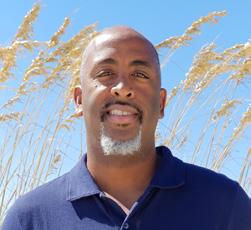
Dr. Gerald Rudolph, DC, focuses on finding the root cause of your problems and not just treating your pain. He utilizes digital X-rays to help diagnose problems, spinal adjustments to stimulate proper movement of spinal and extremity joints, active therapeutic movement exercises to correct movement disorders, and spinal decompression to help relieve numbness and tingling down your arms and legs. Dowdy Rudolph Chiropractic also offers a state-of-the-art fullbody lounge hydromassage table that can help you feel more rejuvenated and relaxed. See ad, page 20.
SPRING RAIN HYDROTHERAPY
Linda Salyer
120 Kaminer Way Pkwy, Ste H, Columbia 803-361-2620 • LSalyer@ymail.com

All disease begins in the colon. Constipation; slow, sluggish bowel; gas and bloating? A colonic will help to rid you of these problems. Colonics promote good digestion, help speed metabolism, help lower cholesterol, and help relieve joint pain. Linda Salyer is IACN certified and a retired nurse. Saturday appointments available with an additional small convenience fee. See ad, page 27
FOOT SAVI
7001 St Andrews Rd, Ste A Certified Board Pedorthist and Brace Specialist 803-781-1230 • FootSavi.com

With more than 30-plus years in the footcare/footwear industry, Sion Owen helps with a variety of issues, including gait analysis, foot assessments, custom orthotics, bracing and compression therapy, plantar fascia pain, neuropathy and fitting for therapeutic shoes for patients with diabetes, arthritis, painful bunions, callouses and hammer toes. Call to schedule an appointment! See ad, page 27.
ABOUT YOUR HEALTH INC
120 Kaminer Way Pkwy, Ste J, Columbia 803-798-8687 • AboutYourHealthSC.com

About Your Health Inc’s main focus is health education and health-enhancing services, including One-on-One Nutritional Counseling, Live/Dry Blood Cell Observation, Mild Hyperbaric Chamber, Ozone Therapies, Thermography, Aqua-chi Footbath, Far Infrared Sauna and more. They also carry hard-to-find natural, organic, wholefood nutritional supplements and products. See ad, page 25
Tracy R. Jacox • 833-678-7229
OriginalOriginshw@gmail.com
OriginalOriginshw.com

Ms. Tracy has over 30 years of experience in the medical field. The mission of Original Origins Health and Wellness is to educate, equip and empower the community to adopt a predominately whole food, plantbased lifestyle, which will improve and optimize your quality of life, health and wellness while preventing, delaying, reversing or eliminating chronic illnesses. Original Origins can assist you with maximizing your health and wellness holistically! Our wide range of services include health coach partnering, comprehensive health evaluations, comprehensive cooking experiences, and a comprehensive kitchen evaluation. Your health is your wealth! See ad, page 22
Grace Mosgeller
303-903-4936 (text only please) GraceMosgeller.com/9DBreathwork

Release years of mental and emotional blocks in a fraction of the time. The revolutionary 9D Breathwork & Sound Healing Technology has helped tens of thousands of people, just like you, repattern limiting beliefs, root out deep traumas and release pent-up emotions in a single session. What’s the end result? Freedom to be happy, satisfied, fulfilled and empowered to live life abundantly at your fullest potential. Find out more and download a 5-Minute Sample at GraceMosgeller.com/9DBreathwork. See ad, page 5
NATURAL BEING HOLISTIC WELLNESS SPA & CENTER
1911 Barnwell St, Ste C, Columbia 803-708-8612 • nbhwsc.com

We are a very unique health and wellness center designed to help you discover a more natural and healthier way of living. Are you in need of a total detox? Do you want to rid your body of toxins or need to lose inches and burn 300 calories in 30 minutes? If you answered “yes” to these questions, then come embark on a healthy journey with us! Our extensive list of professional services includes foot detoxing, infrared sauna body wrapping, vaginal/yoni steaming, and vaginal rejuvenation. Owner and operator Sherino L. Maple is now offering complimentary consultations. Call today to book a consultation.
EXPECT WELLNESS
Dr. Rachel Hall
130 Suber Rd, Columbia 803-796-1702 • DrRachelHall.com
ExpectWellness@sc.rr.com Find us on Facebook for great health tips.

Integrative/Holistic medicine consults for anyone wanting to approach their health more naturally. Dr. Rachel Hall is board certified in both family medicine and integrative holistic medicine. Together we will focus on finding the root of the problem, not just treating symptoms. Call today for a consult if you are looking to achieve balance. In-house diagnostic labs and therapies. See ad, page 3
JOY LEE CONNOR
Healing Minster at Springhill AtONEment Center 803-447-6499
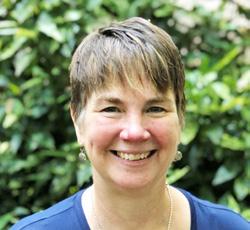
Joy has more than 30 years of experience in energy and bodywork. She teaches Reiki, Touch for Health, Meditation, Yoga, Ayurveda and A Course in Miracles. Joy welcomes and sees clients who are ready to shed guilt and limitations in favor of forgiveness and freedom. One hundred acres of trees surround this pristine location for healing at Springhill AtONEment Center. Nature walks and fireside gatherings available. Contact Joy at 803-447-6499.
ABOUT YOUR HEALTH INC
120 Kaminer Way Pkwy, Ste J, Columbia 803-798-8687 • AboutYourHealthSC.com

Our main focus is health education and health-enhancing services. One-on-one nutritional counseling, Mild Hyperbaric Oxygen Therapy, Reams pH testing, parasite programs, aqua-chi footbaths, far infrared sauna, weight-loss programs, and thermography. Hard-to-find natural, organic, whole food nutritional supplements, raw foods and natural household items. See ad, page 25.
GARNER’S NATURAL LIFE
4840 Forest Dr, Ste 15a, Columbia 803-454-7700 GarnersNaturalLife.com

At Garner’s Natural Life, we offer the purest, most innovative high-quality natural products. With more than 130 collective years of wellness experience! Allows us to encourage your healthy choices. See ads, page 2 and back page.













